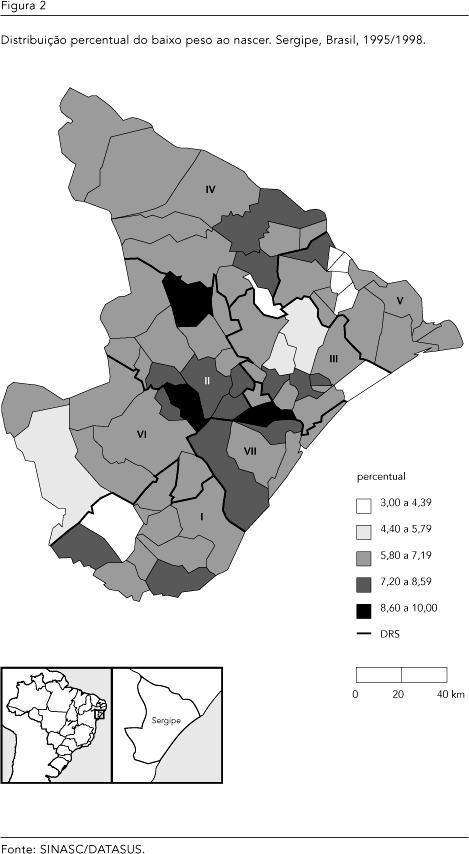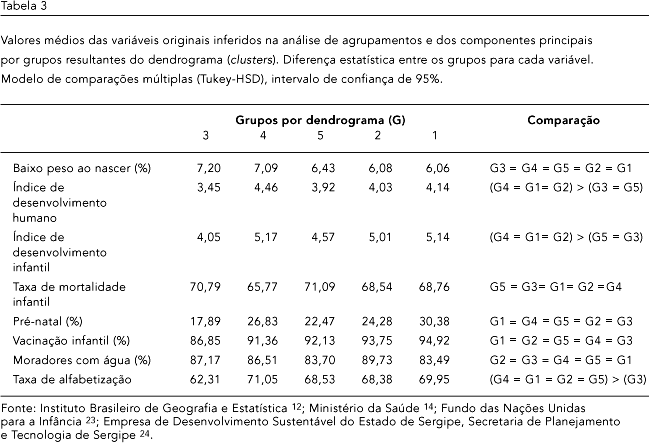This study analyzes the spatial distribution of low birth weight (LBW) in the State of Sergipe, Brazil, evaluating the event as a health indicator. The analysis was based on 166,312 live births in the 75 municipalities in the State, using an ecological approach. Four methods were used: cluster analysis, correlation analysis, multiple regression analysis, and multiple comparisons (Tukey). The study shows internal homogeneity in the municipalities' health districts and in the groups resulting from the cluster analysis. Considering a 10% loss of information, seven groups were identified, two of which were residues (Aracaju and Porto da Folha). There is a downward trend in LBW in Sergipe (with a mean of 6.97% during the period), reflecting a slight improvement in quality of life. The causes suggest relations with the environment and are influenced by spatial occupation patterns. The percentage of LBW is a useful indicator of individual risk, but as a collective health indicator it does not appear capable of expressing differences between regions that do not display strong inter-variability.
Spatial Distribution; Low Birth Weight; Equity





